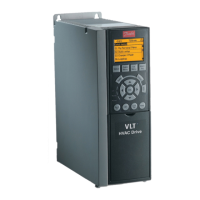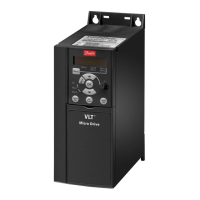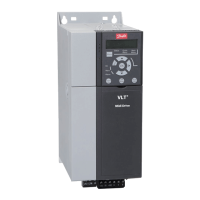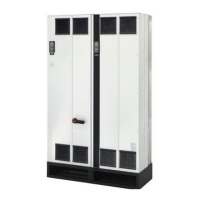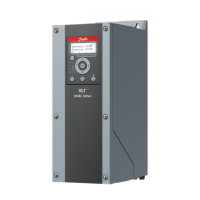Checks
When a mains imbalance trip occurs, check both the input
and output voltage of the drive. Signicant imbalance of
supply voltage or phase loss is detectable with a voltmeter.
View line disturbances through an oscilloscope.
Conduct tests for:
•
Input imbalance of supply voltage
•
Input waveform
•
Output imbalance of supply voltage
Refer to chapter 8.5.2 Input Voltage Test, chapter 8.5.6 Input
Imbalance of Supply Voltage Test, and chapter 8.5.9 Output
Imbalance of Motor Voltage and Current.
In 12-pulse systems, check the input imbalance between
the 2 secondary winding voltages.
7.1.3 Control Logic Problems
Problems with control logic can often be dicult to
diagnose since there is usually no associated fault
indication. Typically, the drive does not respond to a given
command.
To obtain an output, provide these basic commands to the
drive:
•
Start command: To execute.
•
Reference or speed command: To identify the
speed of execution.
The drives are designed to accept various signals. First
determine which of these signals the drive is receiving:
•
Digital inputs (18, 19, 27, 29, 32, 33)
•
Analog outputs (42)
•
10 V output
•
Analog inputs (53, 54)
•
Serial communication bus (68, 69)
The presence of a correct reading indicates that the
microprocessor of the drive has detected the signal. Refer
to chapter 4.9 Shielded Cable Grounding and
chapter 8.5.14 Input Terminal Signal Tests.
This data can also be read in parameter group 16-6* Inputs
& Outputs.
If there is no correct indication, check that the signal is
present at the input terminals of the drive. Refer to
chapter 8.5.14 Input Terminal Signal Tests.
If the signal is present at the terminal, the control card is
defective and must be replaced. If the signal is not present,
the problem is external to the drive. Check the circuitry
providing the signal along with its associated wiring.
7.1.4 Programming Problems
Diculty with operation of the drive can be a result of
improper programming of the drive parameters.
The 3 areas where programming errors can aect drive
and motor operation are:
•
Motor settings.
•
References and limits.
•
I/O conguration.
Refer to chapter 4.6 Drive Inputs and Outputs.
Set up the drive correctly for the motor or motors
connected to it. Parameter 1-20 Motor Power [kW] –
parameter 1-25 Motor Nominal Speed must have data from
the motor nameplate entered into the drive. This data
enables the drive processor to match the drive to the
power characteristics of the motor. The most common
result of inaccurate motor data is that the motor draws
higher than normal amounts of current to perform the
task. In such cases, setting the correct values to these
parameters and performing the AMA function usually
solves the problem.
Any references or limits set incorrectly result in poor drive
performance. For instance, if maximum reference is set too
low, the motor is unable to reach full speed. Set these
parameters according to the requirements of the particular
installation. References are set in parameter group 3-0*
Reference/Ramps.
Incorrectly set I/O
conguration usually results in the drive
not responding to the function as commanded. Remember
that for every control terminal input or output, there are
corresponding parameter settings. These settings
determine how the drive responds to an input signal or
the type of signal present at that output. Utilizing an I/O
function involves a 2-step process. First, wire the I/O
terminal properly, and then set the corresponding
parameter. Control terminals are programmed in parameter
groups 5-0* Digital I/O Mode and 6-0* Analog I/O Mode.
7.1.5 Motor Load Problems
The motor or motor wiring can develop a phase-to-phase
or phase-to-ground short circuit resulting in an alarm
indication. Check whether the problem is in the motor
wiring or the motor itself.
A motor with unbalanced or asymmetrical impedances on
all 3 phases can result in rough operation or unbalanced
output currents. For measurements, use a clamp-on style
ammeter to determine whether the current is balanced on
Drive and Motor Application...
VLT
®
FC Series, D1h–D8h, Da2/Db2/Da4/Db4, E1h–E4h, J8/J9
82 Danfoss A/S © 02/2019 All rights reserved. MG94A502
77
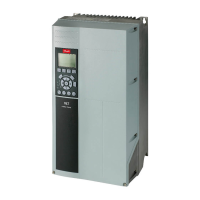
